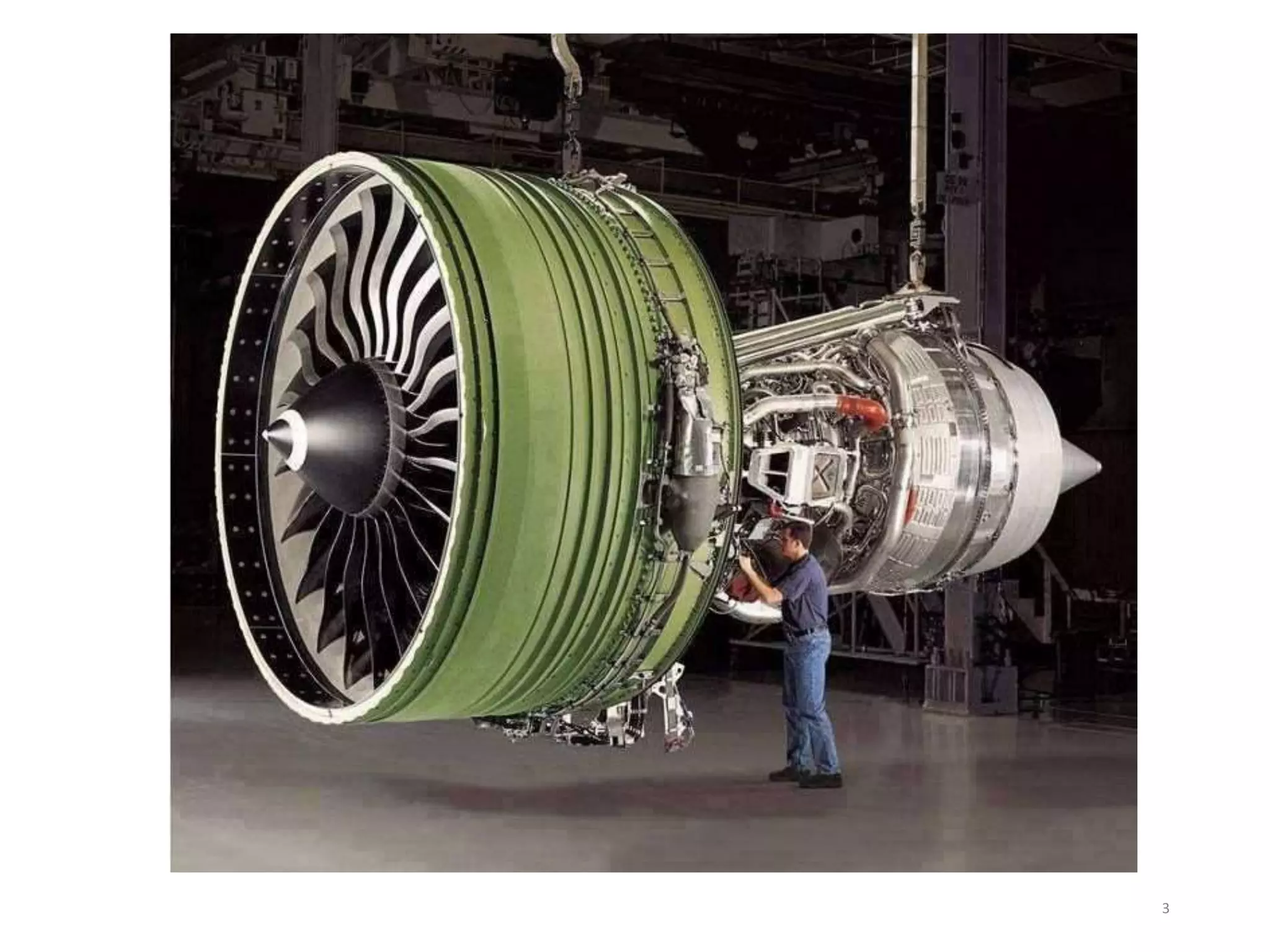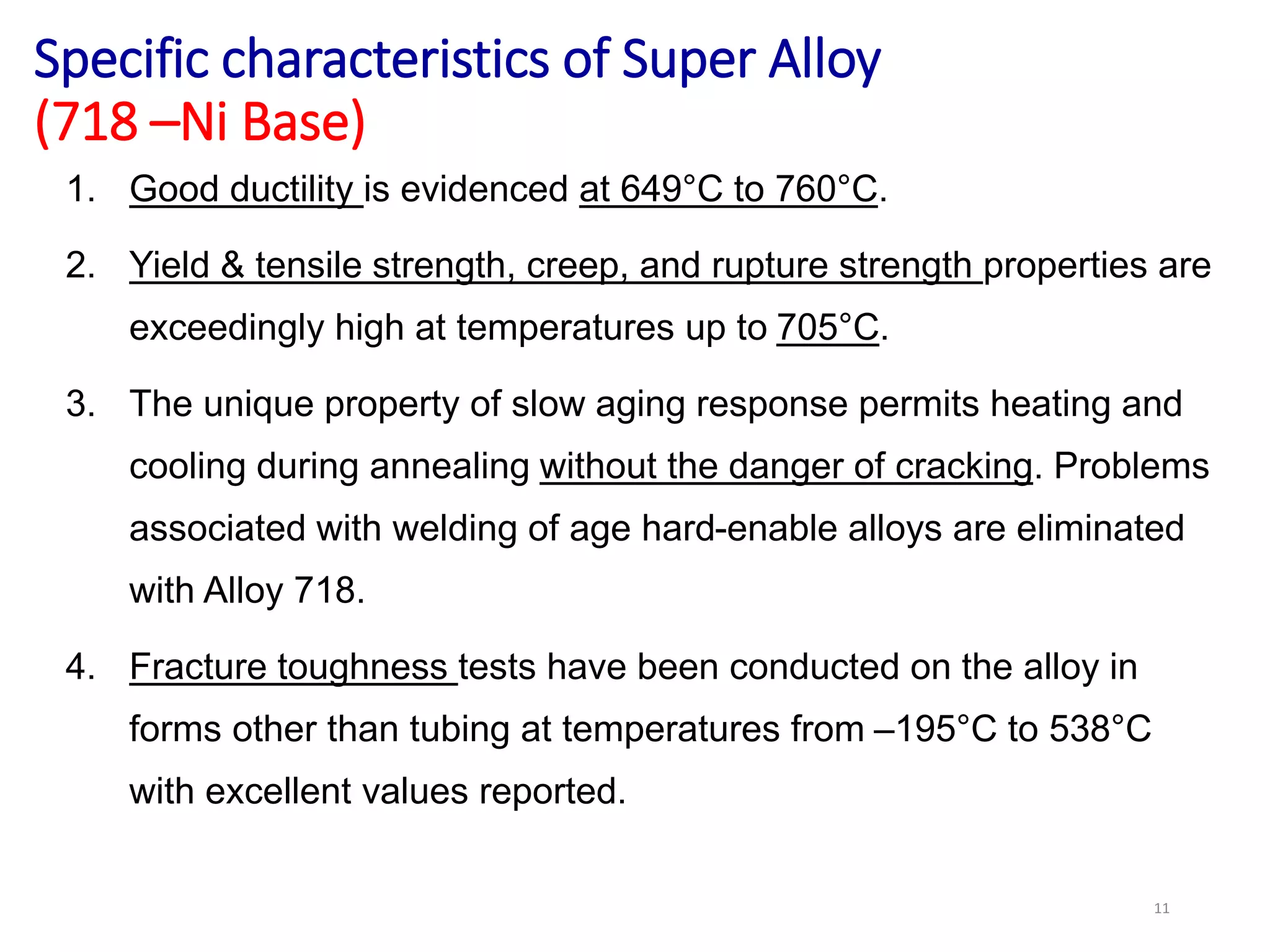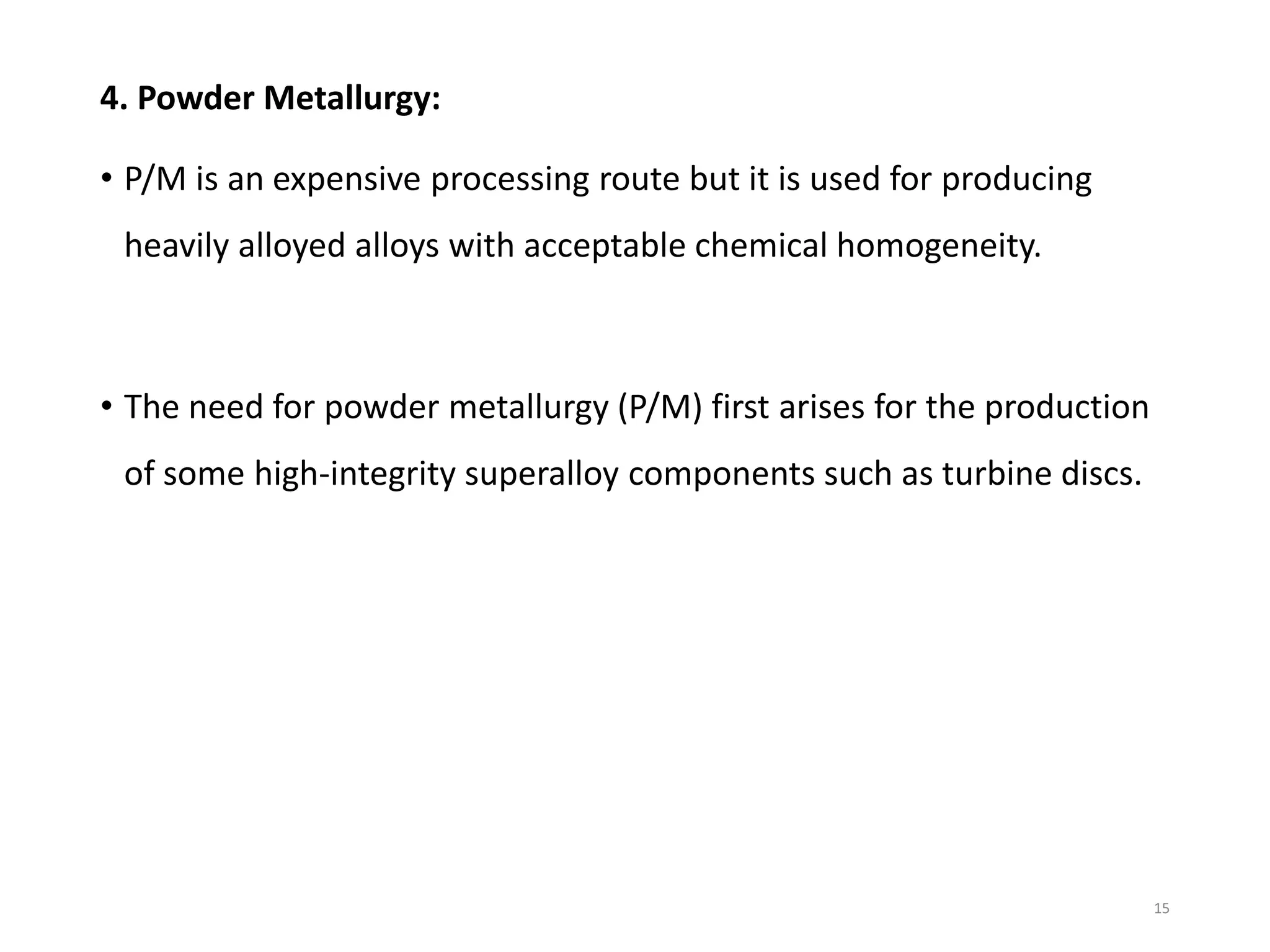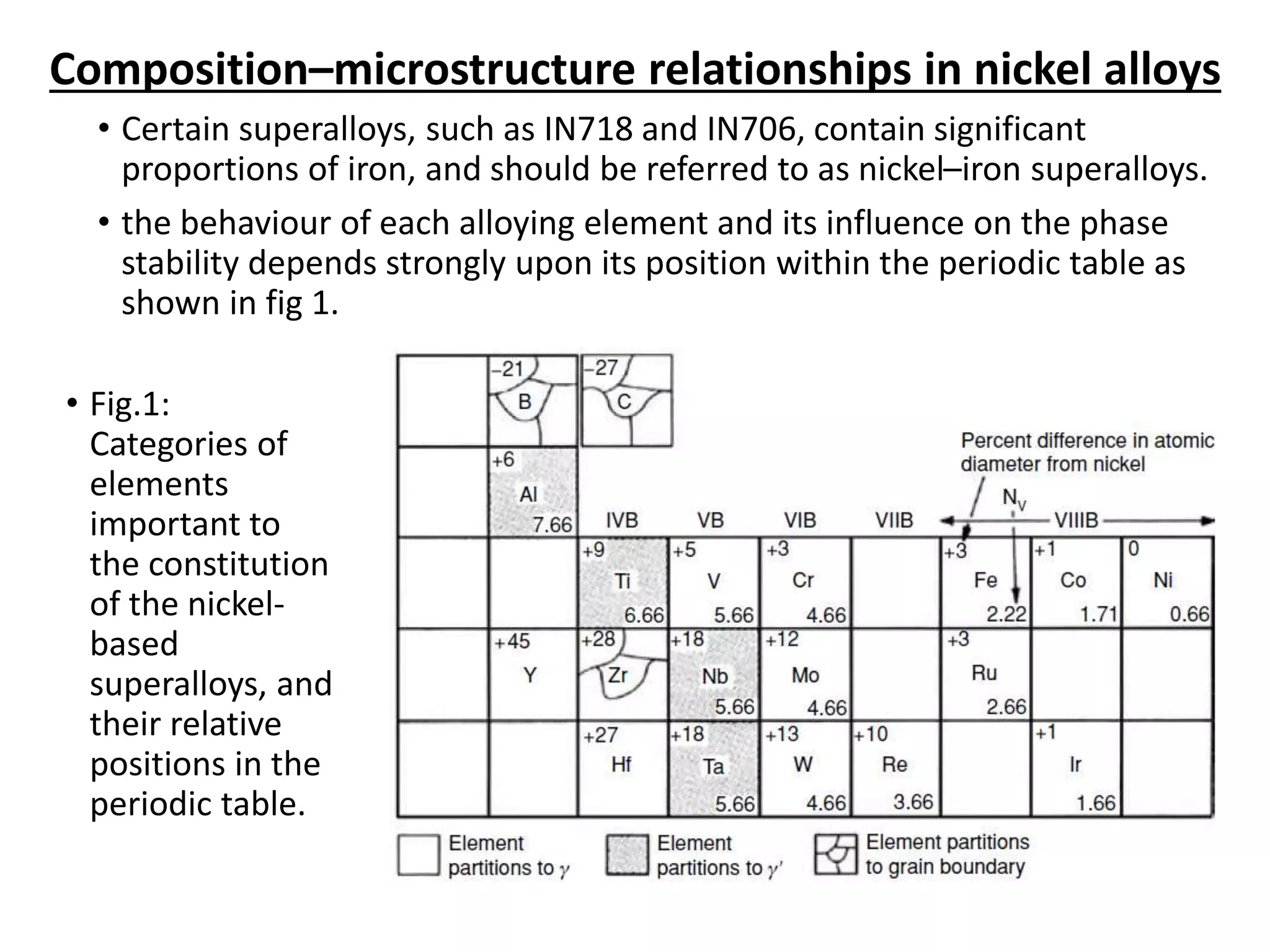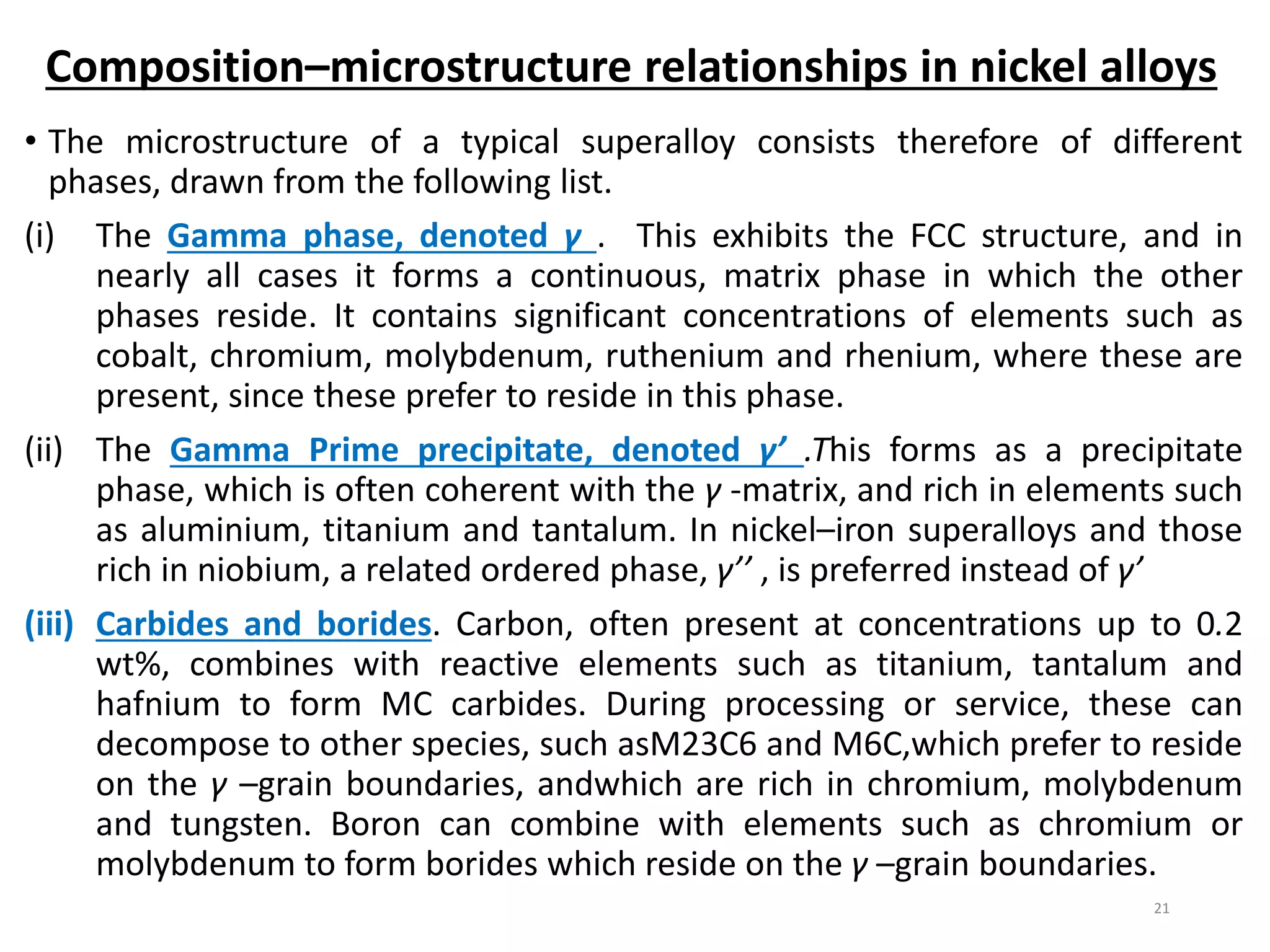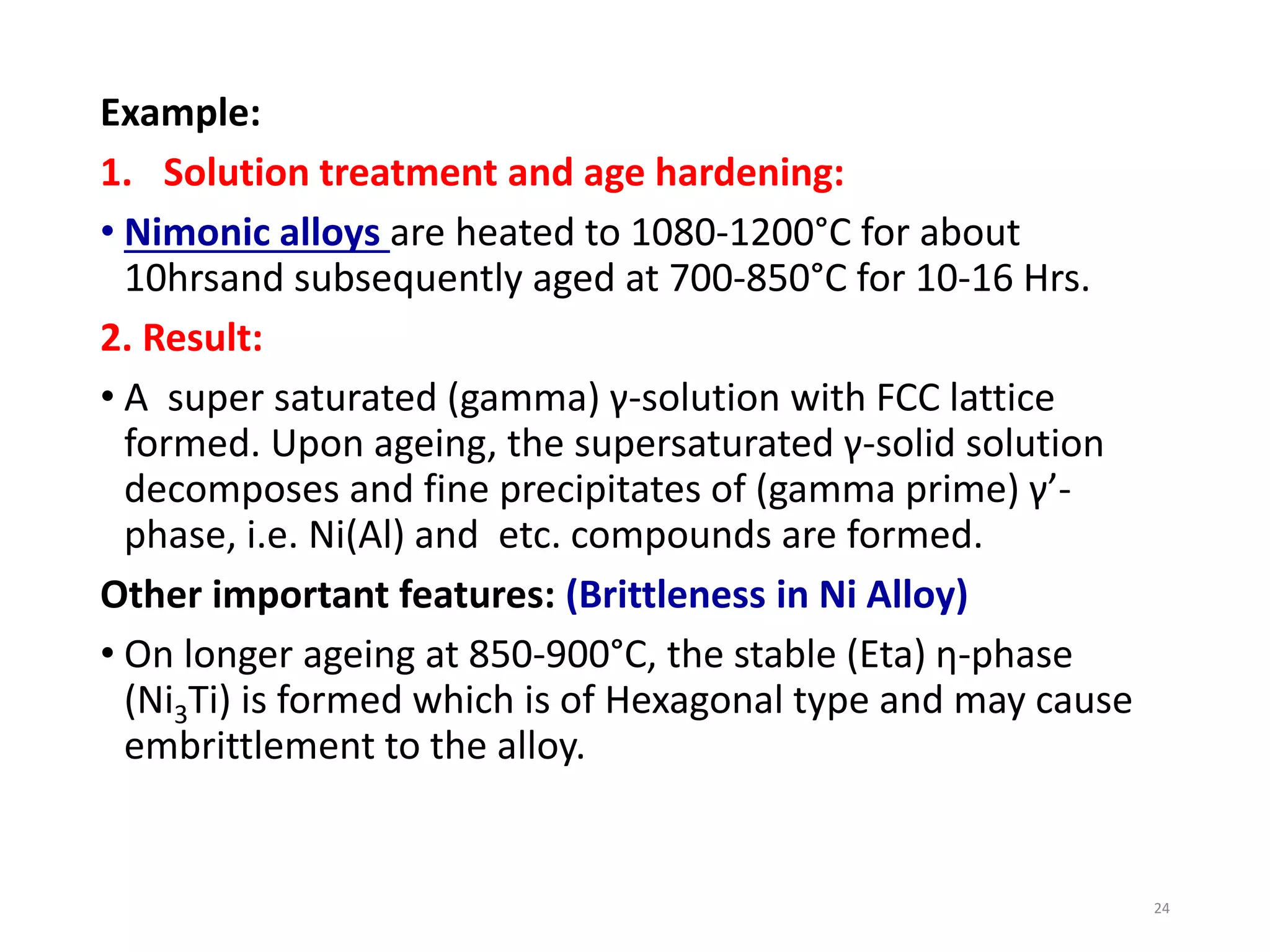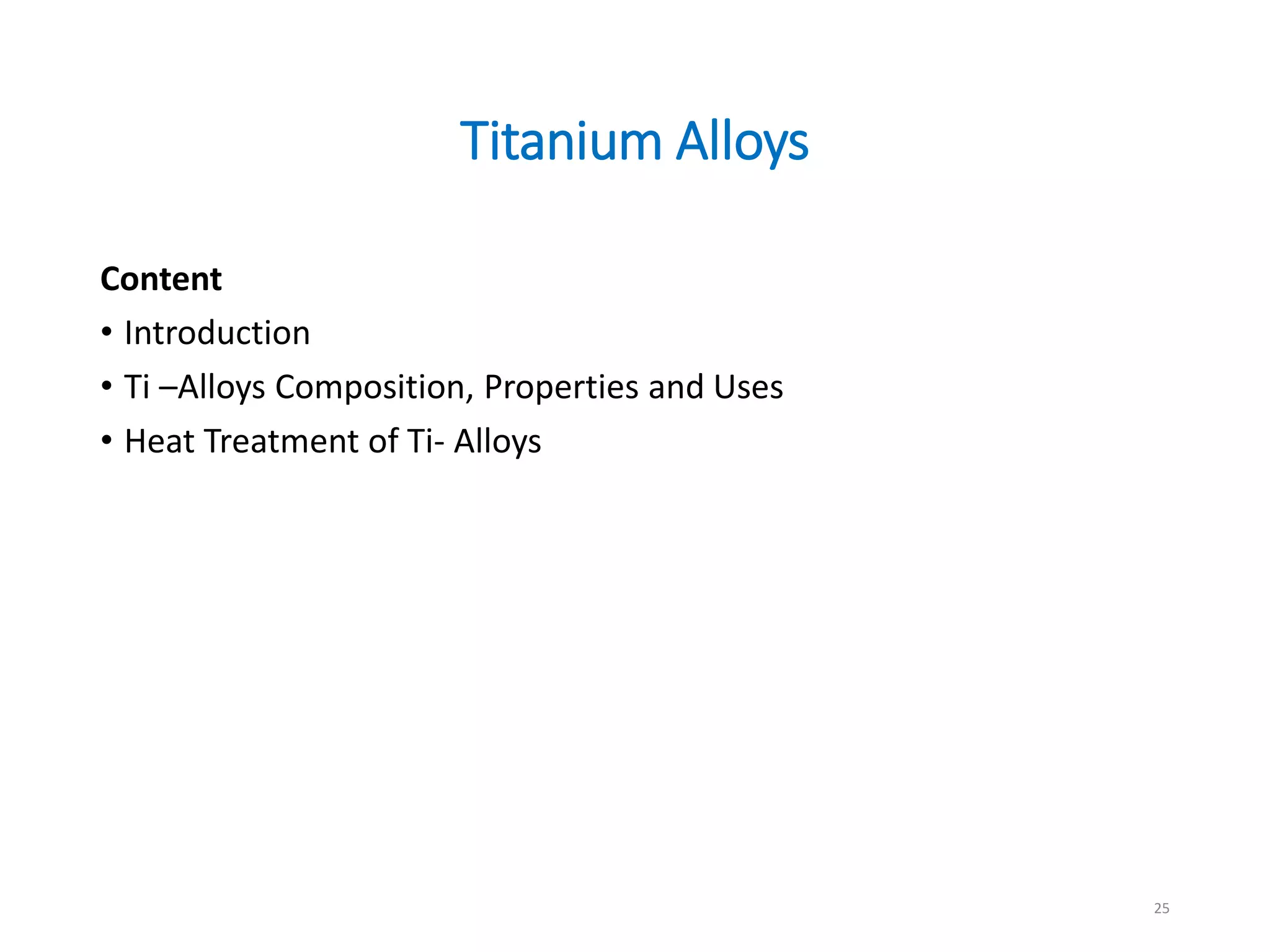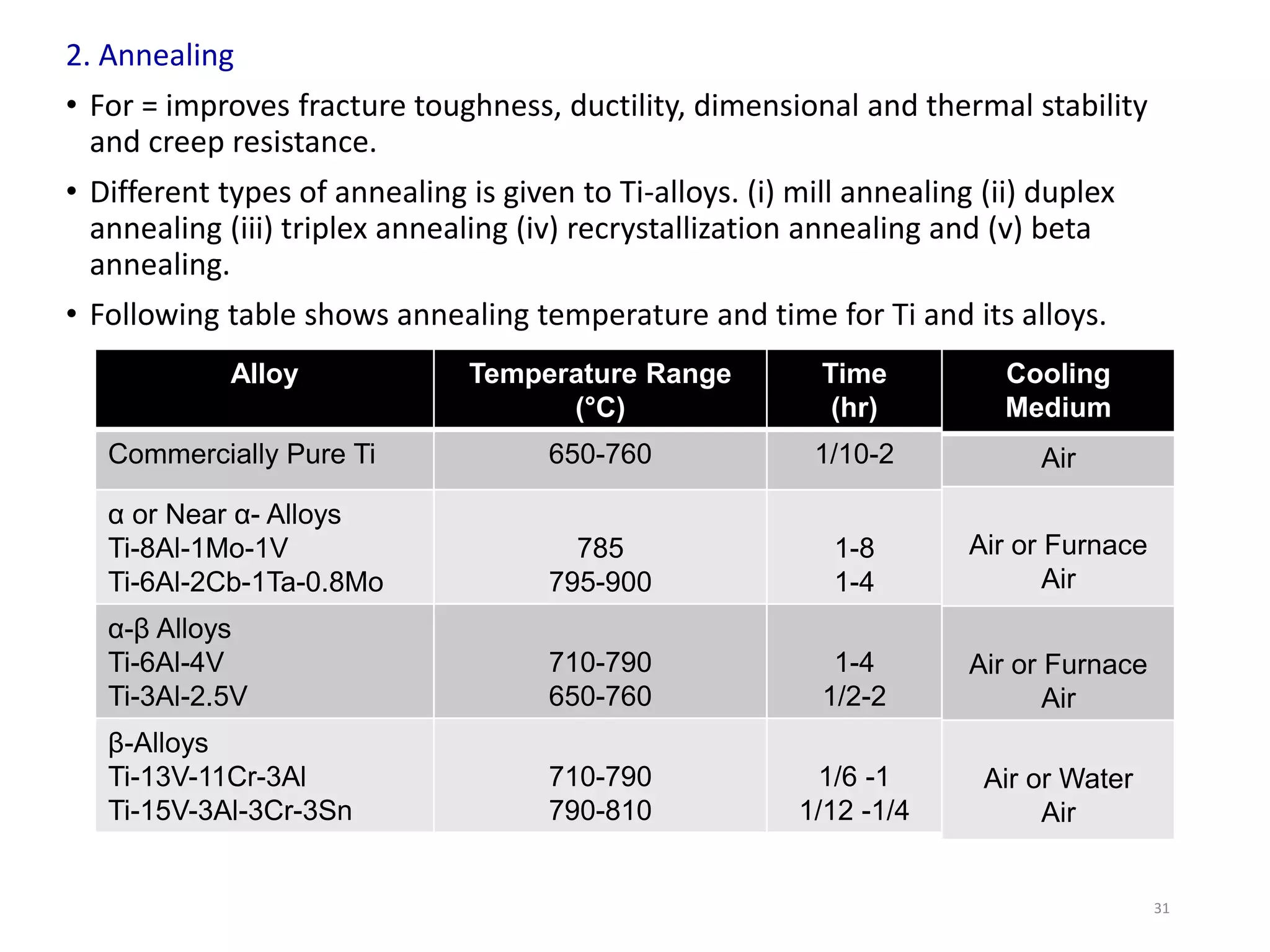This document provides information on super alloys, including their composition, production processes, and applications. It discusses nickel-based, iron-based, and cobalt-based super alloys. Nickel-based super alloys are widely used due to their strength at high temperatures. Their production typically involves vacuum induction melting, investment casting, and secondary melting processes like vacuum arc remelting to improve purity. Key applications include aircraft turbine engines, where components like turbine blades are subjected to high stresses and temperatures. Heat treatment processes like solution treating and aging are used to control the alloy microstructure and achieve high strength properties. Titanium alloys are also discussed as alternatives to aluminum alloys in aircraft structures.


